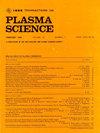冷常压等离子体技术在放射治疗中的研究进展及发展趋势
IF 1.5
4区 物理与天体物理
Q3 PHYSICS, FLUIDS & PLASMAS
引用次数: 0
摘要
冷大气等离子体(CAP)已成为一种很有前途的技术,可以提高放射治疗(RT)在癌症治疗中的疗效和修复后续副作用。本文综述了目前CAP与RT联合应用的研究现状,重点介绍了CAP与RT联合应用的放射增敏作用、放射损伤修复能力以及该方向在临床应用和推广中面临的挑战和解决方案。CAP产生的活性氧和活性氮(RONS)增加了肿瘤细胞对辐射的敏感性,减少了辐射对正常细胞的损伤,从而提高了RT的疗效和安全性。此外,CAP已被证明可促进辐射引起的皮肤损伤的修复,特别是放射性皮炎(RDs),这是RT常见的副作用,目前缺乏有效的治疗方案。通过减轻RD和促进组织再生,CAP为控制rt不良反应提供了一种新的治疗方法。尽管它具有广阔的前景,但一些挑战阻碍了CAP在临床环境中的广泛应用,包括渗透深度有限,缺乏标准化的剂量测定,以及其潜在分子机制的复杂性。此外,CAP设备的标准化、精确的参数控制策略以及长期的安全问题都需要进一步研究。这篇综述强调了继续探索提高CAP在RT中的作用的必要性,为开发更有效、更安全的癌症治疗方法提供了见解。本文章由计算机程序翻译,如有差异,请以英文原文为准。
Research Progress and Development Trends of Cold Atmospheric Plasma Technology in Radiotherapy
Cold atmospheric plasma (CAP) has become a promising technology for enhancing the efficacy of radiotherapy (RT) in cancer treatment and repairing the subsequent side effects. This review summarizes the current research on the combination of CAP and RT, focusing on its radiosensitizing effect, the ability to repair radiation-induced injury, and the challenges and solutions in the clinical application and promotion of this direction. Reactive oxygen and nitrogen species (RONS) produced by CAP increase the sensitivity of tumor cells to radiation and reduce the damage of radiation to normal cells, thus improving the effects and safety of RT. In addition, CAP has been proven to promote the repair of radiation-induced skin damage, especially radiation dermatitis (RDs), a common side effect of RT that currently lacks effective treatment options. By alleviating RD and enhancing tissue regeneration, CAP provides a new treatment method for managing the adverse reactions of RT. Although it has broad prospects, some challenges hinder the wide application of CAP in clinical settings, including limited penetration depth, the lack of standardized dosimetry, and the intricate nature of its underlying molecular mechanisms. In addition, the standardization of CAP equipment, precise parameter control strategies, and long-term safety issues require further investigation. This review emphasizes the necessity of continuous exploration to improve the role of CAP in RT and provides insights for the development of more effective and safer cancer treatment methods.
求助全文
通过发布文献求助,成功后即可免费获取论文全文。
去求助
来源期刊

IEEE Transactions on Plasma Science
物理-物理:流体与等离子体
CiteScore
3.00
自引率
20.00%
发文量
538
审稿时长
3.8 months
期刊介绍:
The scope covers all aspects of the theory and application of plasma science. It includes the following areas: magnetohydrodynamics; thermionics and plasma diodes; basic plasma phenomena; gaseous electronics; microwave/plasma interaction; electron, ion, and plasma sources; space plasmas; intense electron and ion beams; laser-plasma interactions; plasma diagnostics; plasma chemistry and processing; solid-state plasmas; plasma heating; plasma for controlled fusion research; high energy density plasmas; industrial/commercial applications of plasma physics; plasma waves and instabilities; and high power microwave and submillimeter wave generation.
 求助内容:
求助内容: 应助结果提醒方式:
应助结果提醒方式:


